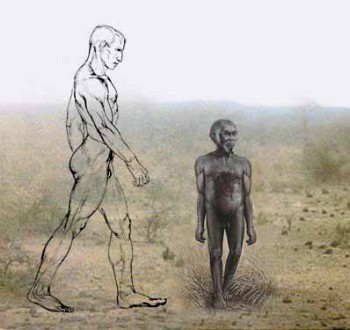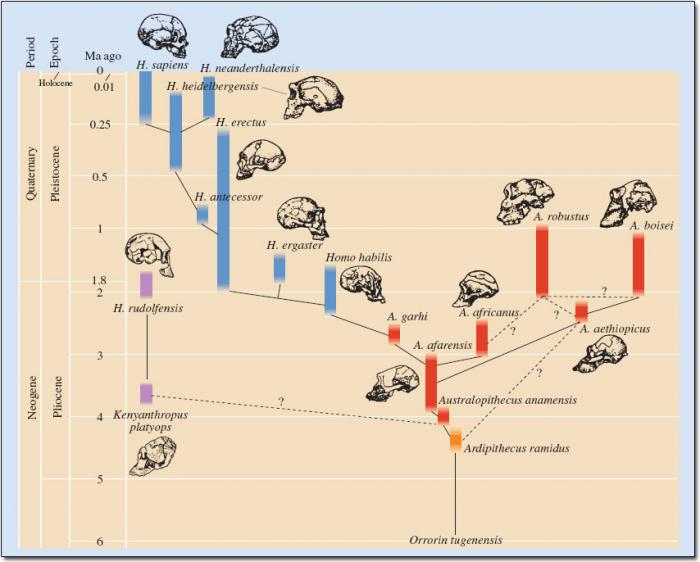We ask you, urgently: don't scroll past this
Dear readers, Catholic Online was de-platformed by Shopify for our pro-life beliefs. They shut down our Catholic Online, Catholic Online School, Prayer Candles, and Catholic Online Learning Resources essential faith tools serving over 1.4 million students and millions of families worldwide. Our founders, now in their 70's, just gave their entire life savings to protect this mission. But fewer than 2% of readers donate. If everyone gave just $5, the cost of a coffee, we could rebuild stronger and keep Catholic education free for all. Stand with us in faith. Thank you.Help Now >
Scientists discover hobbits are real, but they're not related to us
FREE Catholic Classes
A diminutive species of hominid, known as a "hobbit" lived in Indonesia some two to 1.5 million years ago. New research suggests they were not human at all, but an offshoot of a more primitive hominid that previously believed. The work underscores how the tree of human evolutionary history is commonly pruned.

A hobbit man compared to a modern human.
Highlights
Catholic Online (https://www.catholic.org)
4/21/2017 (8 years ago)
Published in Technology
Keywords: Hobbit Man, Flores, Indonesia, evolution, human
LOS ANGELES, CA (California Network) -- Scientists researching the "Flores Hobbits" of prehistoric Indonesia have discovered the species is much older than previously believed. They lived in the region at the same time as Homo Habilis (Handy Man), one of the first species of hominids to develop tools. The Flores Hobbits may have also been one of the first species of humans to leave Africa.
Scientists performed a comprehensive review of the bones and other information about the Flores Hobbits. Originally, it was believed that they evolved from the Homo Erectus (Upright Man), a more modern form of hominid that was initially named known for its upright walking. But the hobbits are older than Homo Erectus.
Instead, they appear to correlate with Homo Habilis, a more primitive species of hominid.
Where these creatures fall on the evolutionary tree matters. According to the Theory of Human Evolution, humans evolved by natural selection from pre-human ancestors known as hominids. As our ancestors developed, they gave rise to other species, basically human cousins, which eventually went extinct. The last of these human cousins were the Neanderthals, which went extinct just 40,000 years ago.
To make the picture of human evolution complete, scientists seek to learn which hominids are direct ancestors and which are cousins. Placing each hominid on its correct place on the evolutionary tree, therefore, makes a difference.
The exercise is confused by the general rarity of the fossils, their often incomplete nature, and the fact that every example of a hominid is still unique, with each being an example of transition in evolution. There are no clear breaks between generations, but rather slow, gradual changes that took thousands to millions of years to become evident.

The human evolutionary tree.
If the Hobbits date to around 2 million years ago, then it is likely they evolved in Africa and could have been among the first to leave the continent. Following the coasts, they almost certainly made their way to Indonesia, taking many generations to complete the journey. They would have arrived in Indonesia by land, as sea levels were lower during these times.
The Hobbits would have looked human-like in appearance, but you would know they are different at a glance. They were short, only a few feet tall. This was the result of their short legs. We see something similar in the chimpanzee. They also had big feet. Their shoulders drooped, and their faces were held forward, also like chimps.
Each of these features would have had a practical use to the hobbits, helping them to survive in their prehistoric environment. However, they went extinct for reasons unknown.
The Theory of Human Evolution is one of the most widely disputed topics in history. However, he vast majority of scientists support it. In fact, it is one of the few areas of science where the consensus is nearly universal. Non-scientists often dispute the theory because it appears to contradict the story of creation in the Bible. Still, many Christians argue that the story of the creation ought to be taken figuratively, which allows room for the science within the realm of belief.
Subscribe Now - Catholic Online YouTube
---
'Help Give every Student and Teacher FREE resources for a world-class Moral Catholic Education'
Copyright 2021 - Distributed by Catholic Online
Join the Movement
When you sign up below, you don't just join an email list - you're joining an entire movement for Free world class Catholic education.
- Easter / Lent
- Ascension Day
- 7 Morning Prayers
- Mysteries of the Rosary
- Litany of the Bl. Virgin Mary
- Popular Saints
- Popular Prayers
- Female Saints
- Saint Feast Days by Month
- Stations of the Cross
- St. Francis of Assisi
- St. Michael the Archangel
- The Apostles' Creed
- Unfailing Prayer to St. Anthony
- Pray the Rosary
![]()
Copyright 2025 Catholic Online. All materials contained on this site, whether written, audible or visual are the exclusive property of Catholic Online and are protected under U.S. and International copyright laws, © Copyright 2025 Catholic Online. Any unauthorized use, without prior written consent of Catholic Online is strictly forbidden and prohibited.
Catholic Online is a Project of Your Catholic Voice Foundation, a Not-for-Profit Corporation. Your Catholic Voice Foundation has been granted a recognition of tax exemption under Section 501(c)(3) of the Internal Revenue Code. Federal Tax Identification Number: 81-0596847. Your gift is tax-deductible as allowed by law.







